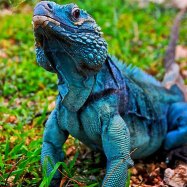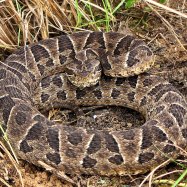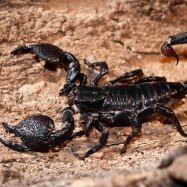
Pit Bull
17-21 inches (43-53 cm)
Pit Bulls, known for their muscular and athletic bodies, are a beloved domesticated member of the Canidae family. Standing between 17-21 inches, these dogs make loyal and loving companions for families. Their friendly nature and high energy make them a popular choice for pet owners. Keep them healthy and happy with proper care and exercise. #PitBulls #Canidae #DomesticatedDogs
Animal Details Summary:
Common Name: Pit Bull
Kingdom: Animalia
Habitat: Varies, but often found in urban and suburban areas
The Fascinating and Misunderstood Pit Bull: A Closer Look at a Misrepresented Breed
Meet the Pit Bull, an often-misunderstood breed that has captured the hearts of many dog lovers around the world. Known for their muscular build and playful personality, Pit Bulls have become a popular choice as a companion animal and have earned a reputation for being fiercely loyal.However, this breed is also arguably one of the most misrepresented and controversial dog breeds in the world. Many people have negative perceptions of Pit Bulls, associating them with violence and aggression Pit Bull. But is this reputation deserved, or is it the product of misinformation and media sensationalism? In this article, we will take a closer look at the Pit Bull breed and uncover the truth about these dogs that are too often painted in a negative light.
The Scientific Classification of Pit Bulls
The Pit Bull, also known as the American Pit Bull Terrier, is scientifically classified as Canis lupus familiaris, a subspecies of the gray wolf. They belong to the Kingdom Animalia, Phylum Chordata, Class Mammalia, Order Carnivora, and Family Canidae, making them closely related to other dog breeds such as the American Staffordshire Terrier and the English Bulldog.Origin
Contrary to popular belief, the Pit Bull breed is not a naturally occurring breed. They were created in the United States in the 19th century through crossbreeding between Old English Bulldogs and Terriers. This breeding was done with the goal of producing a strong and agile dog that was used for bull-baiting and later, as a farm dog.It wasn't until the late 19th century when Pit Bulls were brought to the United Kingdom that they earned their name and began a new role as companion animals. Through time, they have gained popularity and have made their way into millions of households around the world.
Appearance and Characteristics
Pit Bulls have a distinctive appearance, with their muscular build, broad head, and short coat Pinacate Beetle. They come in a variety of colors, including black, white, brown, and brindle, and can have different coat patterns and markings. Their body shape is athletic and well-proportioned, with a strong and defined chest and a thick neck.On average, Pit Bulls can measure between 17-21 inches in length and weigh between 30-60 pounds, although some may be larger or smaller depending on their genetic makeup. These dogs are classified as medium-sized dogs, making them ideal for families with children and homes with limited space.
Temperament and Personality
Despite their notorious reputation, Pit Bulls are actually known for their friendly and loving personality. They are highly social dogs and thrive on human companionship, making them excellent family pets. However, like any other dog breed, proper socialization and training are crucial to raising a well-rounded and well-behaved Pit Bull.When properly trained and socialized, Pit Bulls can be gentle, affectionate, and playful. They are known for their high energy levels, making them great companions for outdoor activities and athletic adventures. They also have a strong prey drive, which can make them prone to chasing after smaller animals, but this trait can be managed through proper training and supervision.
Feeding and Habitat
As carnivorous animals, Pit Bulls should have a diet that is high in protein and fat. A well-balanced diet can help maintain their muscular build and active lifestyle. Owners should also ensure that their Pit Bulls have access to clean and fresh water at all times, especially after meals and physical activity.Pit Bulls are adaptable animals and can thrive in different habitats, although they are commonly found in urban and suburban areas. They do well in homes with yards where they can run and play, but can also adapt to apartment living as long as they receive enough exercise and mental stimulation.
Geographical Distribution
The popularity of Pit Bulls has spread worldwide, and they can now be found in almost every country. However, they are most commonly found in the United States, where they originated, and where they have been recognized as a breed by the United Kennel Club and the American Kennel Club.Despite their worldwide distribution, Pit Bulls continue to face breed-specific legislation and restrictions in many countries. These laws often unfairly target Pit Bulls and have led to misconceptions and stigma surrounding the breed.
The Misconceptions Surrounding Pit Bulls
Unfortunately, Pit Bulls have been victims of negative stereotypes and biases that have led to widespread discrimination. Many people believe that Pit Bulls are naturally aggressive and pose a threat to society, leading to many of these dogs being banned or faced with severe restrictions in certain areas.However, studies have shown that breed-specific legislation is ineffective in reducing dog bites and attacks. Instead, factors such as improper training and irresponsible ownership are more significant contributing factors to dog aggression and attacks.
Another misconception surrounding Pit Bulls is that they have a "locking jaw" or a "bite and hold" reflex, making them more dangerous than other breeds. However, there is no scientific evidence to support the existence of such features in Pit Bulls or any other dog breed. In fact, a study by the National Geographic showed that Pit Bulls have an average bite force compared to other dog breeds.
The Importance of Responsible Ownership
As with any dog breed, responsible ownership is essential when it comes to Pit Bulls. Owning a dog is a big responsibility, and it is the owner's responsibility to ensure that their dog is well-cared for, trained, and socialized.Pit Bulls require consistent training and socialization from a young age to prevent any behavior problems from developing. It is also crucial for owners to understand their breed's specific needs and provide them with enough exercise and mental stimulation to keep them happy and healthy.
In addition, responsible owners should also properly secure their Pit Bulls when in public or around other animals to prevent any accidents or misunderstandings. It is also crucial to keep up with their vaccinations and regular check-ups with a veterinarian.
In Conclusion
Despite their controversial reputation, Pit Bulls are incredibly affectionate, loyal, and playful companions. Their muscular build and athleticism should not be mistaken for aggression or dangerous tendencies.As with any animal, proper training, socialization, and responsible ownership are crucial in shaping a Pit Bull's behavior. They are not inherently more aggressive or dangerous than any other dog breed and should not be treated as such.
With proper education and understanding, we can debunk the misconceptions surrounding Pit Bulls and give these dogs the chance they deserve. As the saying goes, "there are no bad dogs, only bad owners." Let us not judge this breed based on their appearance or unfair stereotypes, and instead recognize them for the loving and loyal companions they can be.

Pit Bull
Animal Details Pit Bull - Scientific Name: Canis lupus familiaris
- Category: Animals P
- Scientific Name: Canis lupus familiaris
- Common Name: Pit Bull
- Kingdom: Animalia
- Phylum: Chordata
- Class: Mammalia
- Order: Carnivora
- Family: Canidae
- Habitat: Varies, but often found in urban and suburban areas
- Feeding Method: Carnivorous
- Geographical Distribution: Worldwide
- Country of Origin: United States
- Location: Domesticated
- Animal Coloration: Variety of colors including black, white, brown, and brindle
- Body Shape: Muscular and athletic
- Length: 17-21 inches (43-53 cm)
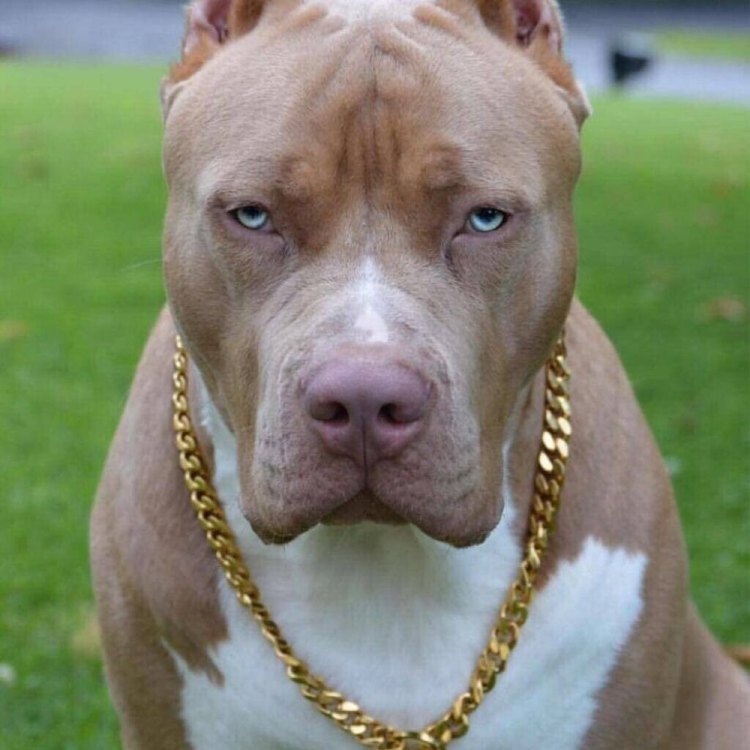
Pit Bull
- Adult Size: Medium to large
- Average Lifespan: 12-16 years
- Reproduction: Sexual
- Reproductive Behavior: Mating occurs when female is in heat
- Sound or Call: Barking
- Migration Pattern: Non-migratory
- Social Groups: Can live with other dogs, but may have dominance issues
- Behavior: Loyal, protective, and energetic
- Threats: Misunderstanding and mistreatment by humans
- Conservation Status: Not evaluated
- Impact on Ecosystem: No significant impact
- Human Use: Companion animals, therapy dogs, working dogs
- Distinctive Features: Powerful jaws, muscular build
- Interesting Facts: Pit Bulls are often misunderstood and have a reputation for being aggressive, but with proper training and socialization, they can be loving and gentle family pets.
- Predator: No specific predator
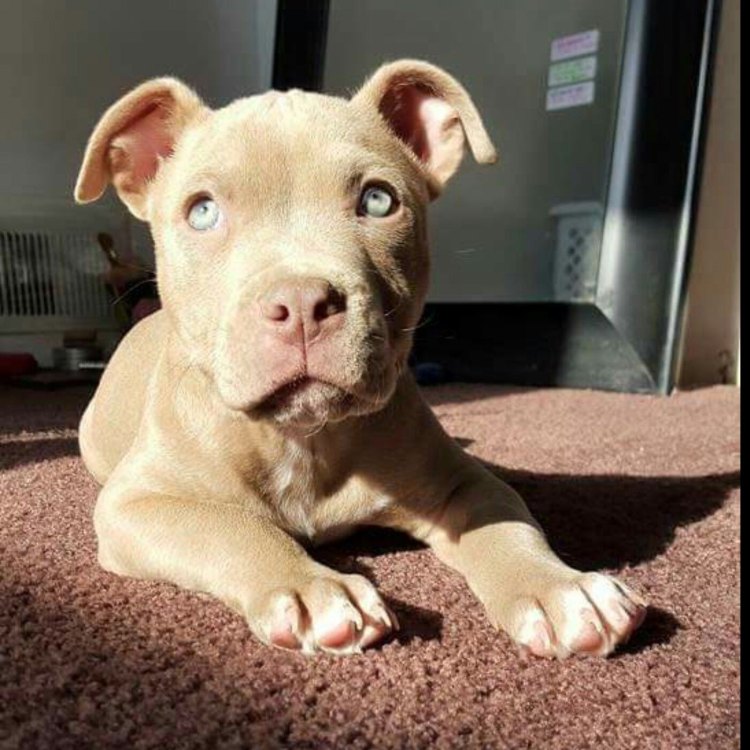
Canis lupus familiaris
The Misunderstood Pit Bull: Loyal, Protective, and Energetic
The Pit Bull, a medium to large-sized breed, has been a controversial topic for many years. They are often portrayed in a negative light and associated with aggression and danger. However, those who have had the privilege of owning a Pit Bull know that they are one of the most loyal and loving breeds. In this article, we will dive into the unique features and behavior of this misunderstood breed and debunk the negative stereotypes associated with them PeaceOfAnimals.Com.Appearance and Physical Features
Pit Bulls come in various colors, including black, brown, gray, and white, and they have a short, shiny coat. One distinctive feature of this breed is their muscular build, making them appear strong and powerful. They have a broad head with a strong jaw, giving them a fearsome appearance. However, contrary to popular belief, their powerful jaws are not meant for aggression but rather for their original purpose: hunting and holding down large game.Their size ranges from medium to large, with an average height of 18-22 inches and a weight of 30-70 pounds. Pit Bulls have a lifespan of 12-16 years, and with proper care and nutrition, they can live a long and healthy life.
Reproductive Behavior
As with most species, Pit Bulls reproduce sexually, and mating occurs when the female is in heat. The gestation period for Pit Bulls is approximately 63 days, after which they give birth to a litter of 5-10 puppies. It is essential to spay and neuter Pit Bulls to prevent overpopulation and prevent future health issues Pygmy Hippopotamus.Social Behavior
Pit Bulls are naturally social animals and bond closely with their human family. They can live with other dogs; however, due to their strong and dominant nature, they may have issues with other dogs of the same sex. It is essential to socialize Pit Bulls from a young age to prevent any potential aggression towards other animals.Behavior and Temperament
One of the most distinctive features of Pit Bulls is their demeanor. Despite their reputation for being aggressive, Pit Bulls are loyal, protective, and energetic. They have a natural instinct to protect their family, making them excellent guard dogs. Their high energy level requires regular exercise and mental stimulation, such as training and playing games. It is crucial to give Pit Bulls a positive outlet for their energy to prevent boredom, which may lead to destructive behavior.Misconceptions and Threats
Sadly, Pit Bulls are one of the most misunderstood breeds, primarily due to misrepresentation in the media. They are often portrayed as dangerous fighting dogs, when in reality, it is the owner's mistreatment and training techniques that lead to aggressive behavior. With proper training and socialization, Pit Bulls can be gentle and loving pets.Another threat to Pit Bulls is the stigma attached to them. Many landlords, housing complexes, and insurance companies have breed-specific legislation that bans Pit Bulls, making it challenging for owners to find places to live. This creates a negative cycle, as it often forces Pit Bulls to end up in shelters or be abandoned.
Conservation Status and Impact on Ecosystem
The conservation status of Pit Bulls is not evaluated. They are not a wild or endangered species and do not significantly impact the ecosystem. However, overpopulation and abandonment in shelters have become a significant issue for this breed. Due to their bad reputation, Pit Bulls are often the last to be adopted, and many end up being euthanized. This problem can be solved by educating the public about the true nature of this breed and responsible ownership.Human Use
Historically, Pit Bulls were used for hunting, herding, and guarding. In modern times, they have become popular as companion animals, therapy dogs, and working dogs. They are incredibly loyal and have a natural ability to sense their owners' emotions, making them excellent therapy dogs. Their intelligence and high energy levels make them ideal for various jobs, such as search and rescue, police and military work, and assisting people with disabilities.Interesting Facts
- Contrary to popular belief, there is no such breed as a "Pit Bull." The term "Pit Bull" is a generalization used to describe several dog breeds, including the American Pit Bull Terrier, American Staffordshire Terrier, Staffordshire Bull Terrier, and Bull Terrier.- Pit Bulls were once considered a symbol of patriotism in the United States during World War I. They were nicknamed "America's Dog" due to their loyalty and bravery.
- Pit Bulls have been given a bad reputation mainly due to their association with dogfighting. However, it is not their nature but rather how they are raised and trained that determines their behavior.
- Despite being muscular and powerful, Pit Bulls are often referred to as "wiggle butts" due to their happy, tail-wagging nature.
No Specific Predator
Unlike other wild animals or breeds, Pit Bulls do not have a specific predator. They have adapted well to living with humans, and their strong protective nature also makes them capable of defending themselves against potential threats.In Conclusion
In conclusion, Pit Bulls are a misunderstood breed, often portrayed in a negative light due to the actions of irresponsible owners. They are loyal, loving, and protective, and with proper training and socialization, they make wonderful family pets. It is essential to educate the public about the true nature of Pit Bulls and advocate for responsible ownership to overcome their negative stereotypes. Let us give Pit Bulls a chance to show their true colors and be appreciated for the unique and loving breed that they are.
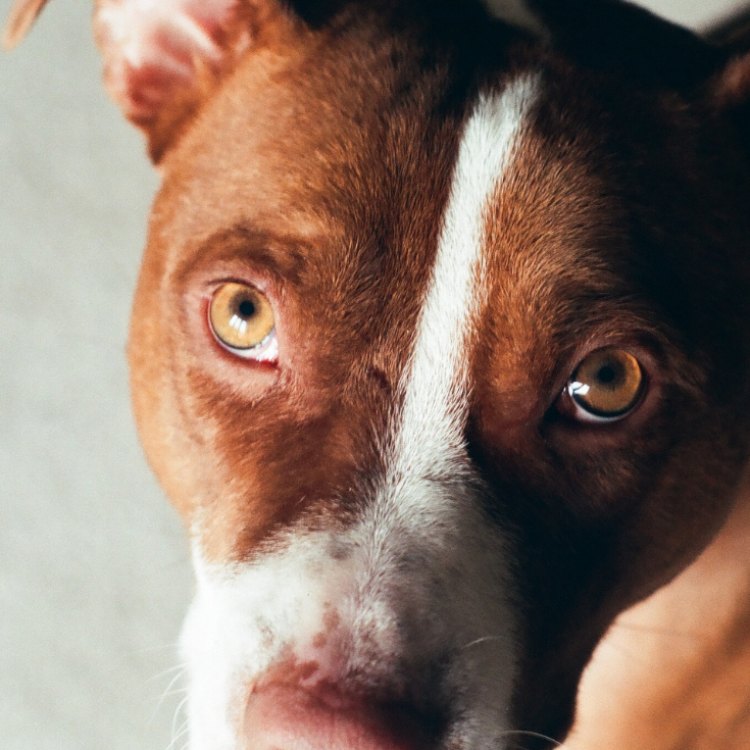
The Fascinating and Misunderstood Pit Bull: A Closer Look at a Misrepresented Breed
Disclaimer: The content provided is for informational purposes only. We cannot guarantee the accuracy of the information on this page 100%. All information provided here may change without prior notice.



